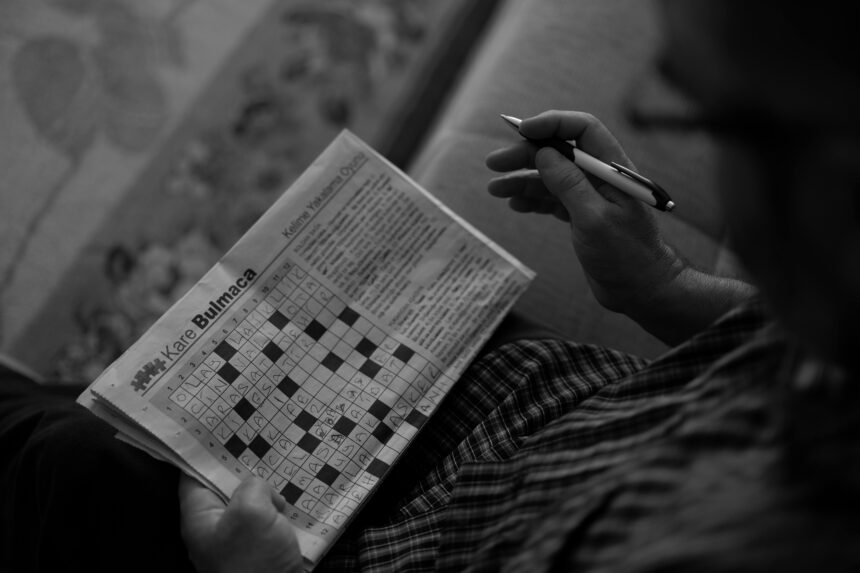Introduction
If you’re an avid solver of the New York Times (NYT) crossword puzzles, you know that sometimes the clues can be a real workout—not just for your mind but also for your body. It might sound surprising, but solving crosswords can even make you aware of bodily discomforts, especially if you’re spending long hours hunched over the puzzle. This blog post aims to explore the fascinating intersection of physical fitness and mental agility, emphasizing how strengthening your back muscle for short NYT solutions can improve your crossword-solving experience. We’ll go over why back muscle health is crucial, introduce some exercises, and explain how these practices can benefit crossword enthusiasts like you.
Why Crossword Solvers Need Strong Back Muscles
The Strain of Long Sessions
Solving a crossword puzzle isn’t just a mental exercise; it often involves sitting in one place for extended periods. Whether you’re at a desk, on your couch, or even lying in bed, these prolonged sessions can put a strain on your back muscle for short NYT. Over time, this can lead to discomfort and even chronic pain.
Mind-Body Connection
It’s well-documented that physical well-being significantly impacts mental performance. When you’re free from physical discomfort, your mind can focus better, making those tricky NYT crossword clues easier to tackle. Strong back muscles help maintain good posture, which in turn enhances mental clarity and concentration.
Enhancing Your Solving Experience
A strong back doesn’t just prevent pain; it also enhances your overall solving experience. You’ll likely find that you can sit comfortably for longer periods without needing frequent breaks, allowing for a more immersive and enjoyable puzzle-solving session.
Understanding the Back Muscles
Major Muscle Groups
Your back comprises several key muscle groups, each playing a unique role in maintaining posture and supporting physical activities. The primary muscles include the latissimus dorsi (lats), trapezius (traps), and the erector spinae.
The Role of Each Muscle
- Latissimus Dorsi: These large muscles are located on either side of your back and are crucial for movements involving your shoulders and arms.
- Trapezius: Found in the upper back and neck, these muscles help you lift your arms and support your shoulders.
- Erector Spinae: These are long muscles running along your spine, responsible for keeping your back straight and assisting in bending and twisting motions.
Importance in Everyday Activities
Strong back muscles are essential for various daily activities, from lifting objects to maintaining good posture while sitting. For crossword solvers, having well-developed back muscles helps alleviate the strain from long periods of inactivity.
Best Exercises for Strengthening Back Muscles
Deadlifts
Deadlifts are one of the most effective exercises for overall back strength. They target multiple muscle groups, including the lower back, lats, and traps. Start with lighter weights and focus on form to avoid injury.
Rows
Rows are excellent for targeting the upper back and lats. You can perform them using dumbbells, barbells, or even resistance bands. Ensure that you maintain a neutral spine throughout the movement.
Pull-Ups
Pull-ups are a fantastic bodyweight exercise for strengthening the upper back and shoulders. If pull-ups are too challenging initially, try assisted pull-ups or use a pull-up machine at the gym.
Incorporating Stretching into Your Routine
Importance of Stretching
Stretching is crucial for maintaining flexibility and preventing muscle stiffness. It’s particularly important for crossword solvers who spend long periods sitting.
Effective Stretches for the Back
- Cat-Cow Stretch: This yoga pose helps in loosening the spine and relieving tension.
- Child’s Pose: Another yoga staple, this stretch targets the lower back and helps in reducing stiffness.
- Spinal Twist: This stretch is excellent for the entire spine and helps in releasing tightness in the back.
When to Stretch
Stretching should be incorporated before and after your strength training exercises. Additionally, take short breaks during your crossword sessions to perform some light stretches and keep your back muscle for short NYT relaxed.
The Role of Ergonomics
Setting Up Your Solving Station
An ergonomic setup can make a significant difference in preventing back pain. Ensure that your chair supports your lower back and that your work surface is at a comfortable height.
Using Ergonomic Accessories
Consider using accessories like lumbar support cushions and adjustable desks. These tools can help you maintain good posture and reduce the strain on your back muscles.
Regular Breaks
No matter how ergonomic your setup is, it’s essential to take regular breaks. Stand up, stretch, and walk around for a few minutes to keep your muscles active and prevent stiffness.
Nutrition for Muscle Health
Importance of a Balanced Diet
A balanced diet is crucial for muscle health. Ensure that you’re consuming enough protein, healthy fats, and carbohydrates to support muscle growth and repair.
Key Nutrients
- Protein: Essential for muscle repair and growth. Include sources like chicken, fish, beans, and nuts in your diet.
- Calcium and Vitamin D: Important for bone health, which indirectly supports strong muscles. Dairy products, leafy greens, and sunlight exposure are good sources.
- Magnesium: Helps in muscle function and relaxation. Found in nuts, seeds, and whole grains.
Hydration
Staying hydrated is crucial for muscle function. Ensure that you’re drinking enough water throughout the day, especially if you’re engaging in physical activities.
The Psychological Benefits of a Strong Back
Enhanced Concentration
Physical discomfort can be a significant distraction. When you’re free from pain, your concentration improves, making it easier to solve those tricky NYT crossword clues.
Reduced Stress
Exercise and physical activity are known to reduce stress levels. A strong back allows you to engage in various forms of exercise, promoting overall well-being and reducing stress.
Improved Confidence
Physical fitness often translates to improved self-confidence. Feeling strong and healthy can boost your confidence, both in your puzzle-solving abilities and in other areas of life.
Community and Support
Joining Fitness Groups
Consider joining fitness groups or classes that focus on back strength, specifically tailored for enhancing your back muscle for short NYT solutions. This can provide motivation and support, helping you stay committed to your fitness goals.
Online Forums
Online forums and communities can be a great resource for tips and advice. Engage with other crossword enthusiasts who are also focusing on their physical fitness.
Sharing Your Journey
Don’t hesitate to share your fitness journey with the crossword community. Your story could inspire others to take steps towards improving their physical health.
Common Mistakes to Avoid
Ignoring Pain
Always listen to your body. If you experience pain during any exercise, stop immediately and consult a healthcare professional.
Skipping Warm-Ups
Never skip warm-ups before engaging in strength training. Warm-ups prepare your muscles for the workout and reduce the risk of injury.
Overtraining
Avoid overtraining by giving your muscles enough time to recover. Incorporate rest days into your routine to prevent burnout and injury.
FAQs
How Often Should I Train My Back Muscles?
Aim to train your back muscles at least twice a week. Ensure that you incorporate a variety of exercises targeting different muscle groups.
Can I Strengthen My Back Without Weights?
Yes, bodyweight exercises like pull-ups and yoga poses can effectively strengthen your back muscles. Resistance bands are another excellent alternative to weights.
How Long Will It Take to See Results?
Results can vary based on individual factors such as current fitness level and consistency. However, most people start noticing improvements within 4-6 weeks of regular training.
Conclusion
Strengthening your back muscle for short NYT solutions can significantly enhance your overall crossword-solving experience. Not only does it prevent discomfort, but it also boosts concentration and reduces stress. By incorporating strength training, stretching, and ergonomic practices into your routine, you can enjoy solving NYT crossword puzzles without any physical hindrances. Take the first step towards a pain-free and immersive solving experience today. If you’re ready to elevate both your physical fitness and puzzle-solving skills, start integrating these practices into your daily routine.
Remember, a strong back is the backbone of a strong mind. Happy solving!
Also Read: Centerpieces at Wedding Receptions NYT: Unique Ideas





You are absolutely right. There is something in this and the idea is excellent, I support it.
Thanks appreciated.